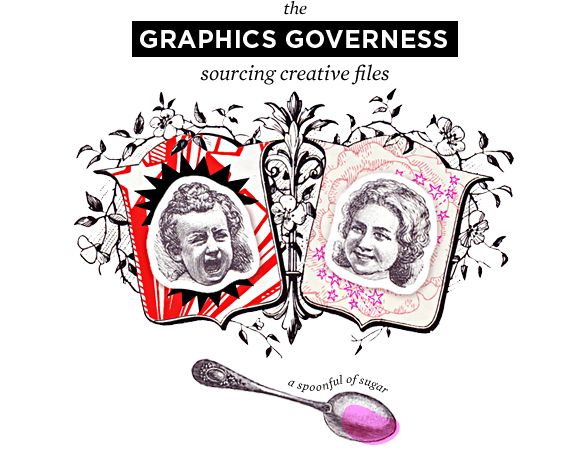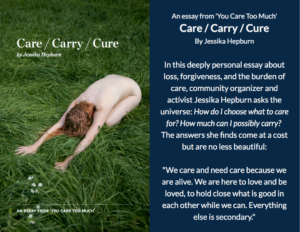Happy October, dear Oh My-ers! I’m so happy to be back for another installment of governing goodness! This month, since you will all be busily working on your brands thanks to OMHG’s fabulous DIY Branding theme, I’d like to go a little beyond the usual tutorial. Whether you are working on tying your brand together with packaging, web graphics or stationery, or just looking for ways to up the creative bar, this will be a very pertinent subject for many of you. We’re starting at the source by exploring an issue that the lovely Zoe of Zoe Rooney Web Development inquired about: where/how does one source graphics/photos/etc?
Great question, Zoe! Sourcing can save time and money, and provide an additional level of creative depth to our work using images, textures, brushes, icons, fonts and illustrations. Here at OMHG, we’re all about sharing while respecting others and their intellectual property – so here’s how to source, OMHG style!
Prior to heading out into the wild to find what you need, see if you can DIMBY – Do-It-Mucho-Better-Yourself. Grab a sketchbook, a camera or your favourite software and get busy. It’s amazing how resourceful one can become when push comes to shove, and you may even stumble upon your very own signature style while you’re at it. If your needs are beyond anything you have time to learn or do at the moment, you can move on to…
You can’t beat free. In addition to compiled sites, talented artists/photographers/bloggers regularly post textures, designs and other goodies for you to download for free. Thing is, you need to know how to navigate the world of free, because free can be a tricky little beastie that turns around and bites you in the butt. Bottom line: it’s essential to respect the wishes of the creator of the file you want to use.
You’ve found something you like on the internet, and the artist is inviting you to download it and use it? Here’s your checklist to make sure it’s safe for your purposes:
- Permitted for commercial use. Your business, no matter if it’s part-time, some-time or any-time, is a commercial project. The file you found is for personal use only? Best to move along.
- Attribution. This is particularly important if you are interested in a file that has been licensed under Creative Commons. If there isn’t room or feasibility for you to add a credit in your artwork for the file’s creator, keep on lookin’.
- Special requests. The creator may want you to contact them for written permission first, or have other requests. If it’s too complicated for you, don’t use the file.
- Is there a read-me file, a license agreement, a disclaimer? Read it. Thoroughly. These have been known to change, and it’s your responsibility to keep tabs on them.
Worth noting: this checklist applies to free fonts, as well.
Ultimately, free files can be wonderful when used correctly. Just follow the rules and have fun! Going free is taking too long? Too much work? Got no time to spare? Maybe you should check out…
There are a variety of stock sites on the internet – they come in very handy for photographs, illustrations, video and more. The key thing to remember is that they all have different terms and licensing agreements. There may be limitations on where you can use the file, how frequently, the maximum size permitted, product resale limitations and so on. When in doubt, read the fine print. It may be tempting to use these files as you please once they’re in your possession, but just because you’ve paid to use them doesn’t mean you now own them – if you’re unsure, check the agreement that you just clicked “yes” on before you bought the file. I’ve seen people get hunted down for misuse (it’s easier to be apprehended than you think) so it’s important to use them as intended. Here’s a breakdown of the more common types of stock files available, but please refer to each site’s licensing terms for the full deal:
- Royalty-free: Generally, this defines files that you can use as frequently as you like, in as many projects as you like. This kind of accessibility is reflected in the affordable price, so don’t be surprised if you run into others using the same file, too. You can then congratulate each other on having impeccable taste.
- Rights-managed: Often higher-end photography or design that you pay to use exclusively for a determined amount of time. Be prepared for a higher price tag and to provide a lot of information about your project prior to your purchase.
Worth noting: often, stock files are not licensed for logo use, so be sure to read the terms carefully.
Also under the free-ish umbrella, there exists a wealth of vintage images out there that are known as copyright-free or public domain, often due to expired or non-existent copyright. As always, it’s essential to read the fine print, especially if you’re browsing on the internet. Books of vintage “clip art” and design are also available for purchase, showcasing collections which you can use relatively freely – just follow their instructions.
Finally, here are a few resources for you to get your hands dirty! This is, of course, just the tip of the iceberg – a little Google perusal (Goorusal?) will result in even more hours of exploration and discovery. Feel free to join in the conversation and add your own favourites in the comments below! Remember, sharing is caring 🙂
Free
sxc.hu
pixabay.com
puglypixel.com/category/resources
subtlepatterns.com
designkindle.com
noupe.com/category/freebie
lostandtaken.com/ (one of Jessika’s favourites!)
cgtextures.com/ (one of Zoe’s favourites!)
Stock
istockphoto.com
veer.com
corbisimages.com
gettyimages.com
jupiterimages.com
shutterstock.com
Bonus Round
doverpublications.com/ca/info.html
melsbrushes.co.uk/?p=1727
Thanks for tuning in! I hope this helps you get even more creative with your branding projects. If you have a challenge you’d like some help with, feel free to drop me a line in the comments and I’ll see what I can do! See you all next month!
Hugs and kisses, the Graphics Governess.







